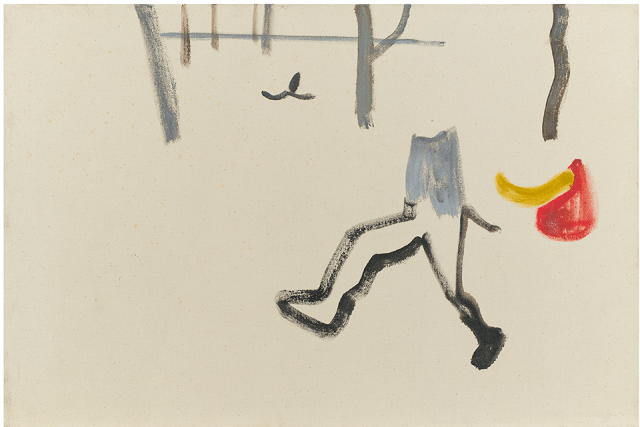
Frances Hynes, Embryonic Series: Edge of the Woods, no date, oil on canvas, 20” x 30”
St. John’s University and the Dr. M.T. Geoffrey Yeh Art Gallery are pleased to announce a Gallery Talk on Thursday, November 18, from 2 to 3 p.m., with Queens, NY, artist Frances M. Hynes ’66Ed. A graduate of St. John’s, Ms. Hynes has been exhibiting her work for almost 50 years.
Her current exhibition, The Wanderers, 1994–2001, features more than 20 paintings focusing on her “Irish Paintings,” a series of works she made in the 1990s after several trips to the Emerald Isle. It is on view until December 11.
Since graduating from St. John’s University in 1966, Ms. Hynes, a native of Bayside, Queens, has remained consistently involved with New York’s painting scene, including a 1980 solo exhibition at The Institute for Contemporary Art, P.S. 1 (now MoMA PS1), and solo exhibitions with the June Kelly Gallery, Moe’s Meat Market, the Poindexter Gallery, and Terry Dintenfass, Inc.
A friend and peer of renowned artists like Will Barnet, Lois Dodd, Robert Kobayashi, Deborah Remington, and Susan Weil, Ms. Hynes has produced several decades of paintings about the human condition, the changing cityscape, and the natural world. Her journey to Ireland was a homecoming, and the pastoral landscape of her family’s ancestral country significantly impacted her work. A new lexicon of signs and symbols entered her paintings: references to Celtic life, from pre-Christian traditions to modern folktales.
This moment in Ms. Hynes’s practice resulted in career-defining works that synthesize abstract, fleeting landscapes, dissolving in color with ambiguous figures and creatures, often annotated with lines of text. These works tell a poetic story through art about migration, wandering, and memory.
In 1995, Ms. Hynes accepted a position as a Visiting Professor at Burren College of Art in County Clare, Ireland. For months, she became immersed in the rolling hills of farmland, local curing wells teeming with waters that purportedly healed the ails of believers, and the poetry of Seamus Heaney and William Butler Yeats.
For Ms. Hynes, this period of wandering and discovery manifested in such paintings as The Wanderers (1996), which depicts humanoids, horses, and deer migrating through wintry woods. The Leaving, on loan from Ireland’s Great Hunger Museum at Quinnipiac University, evokes the history of Irish migration because of the 19th-century’s Potato Famine. Other paintings, such as Ochre Skellig, take cues from Ireland’s archaeological sites (e.g., the Skellig Islands’ medieval monasteries, which are abandoned ruins that rest atop craggy lands alone in the Atlantic).
Overall, the exhibition is a retrospective glimpse of a crucial period in Ms. Hynes’s career, a journey about what makes us human, and a longing for a homeland.
